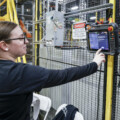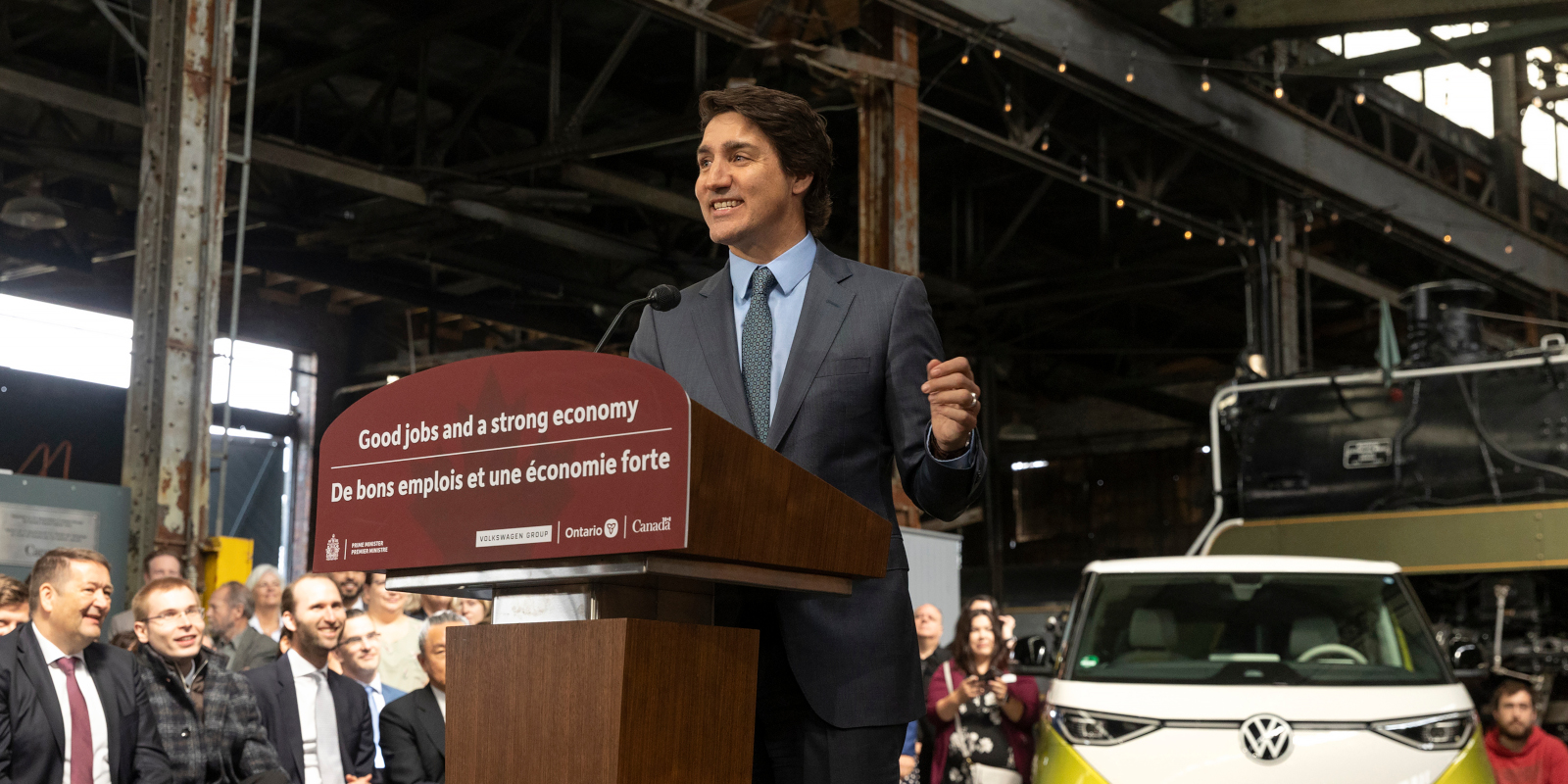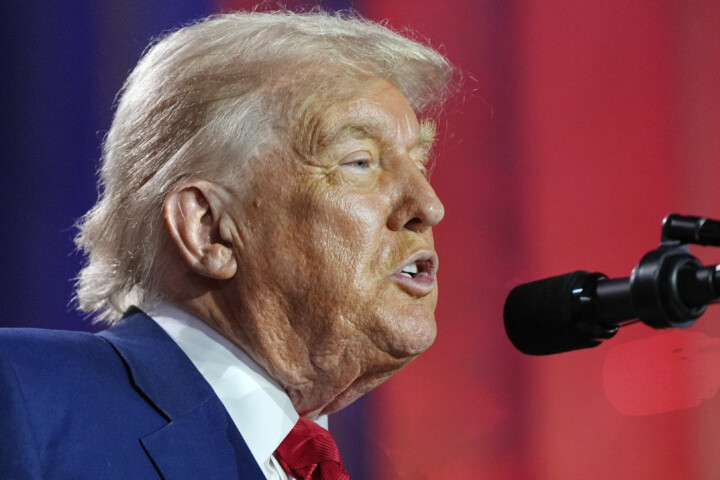Ottawa is committed to bringing EV battery producers to Canada. The federal government demonstrated it will spend billions per project to make that happen when it was revealed Volkswagen will receive a $13 billion subsidy from the federal government to set up an electric vehicle (EV) battery plant in St. Thomas, Ontario.
Stellantis, another EV producer setting up operations in Canada, has threatened to leave the country if it does not receive a similar subsidy. Many economists have slammed the decision as an ineffective waste of taxpayer money, while industry advocates and researchers have praised it.
However, amidst a rapidly electrifying automotive industry in North America, subsidies for EV producers may have already become the norm in Canada.
“The federal government has set a benchmark because they’ve been clear, really since the day that the IRA was tabled. They have said that Canada will compete with the U.S.,” says Brian Kingston regarding the $13 billion subsidy.
Kingston, the Canadian Vehicle Manufacturers’ Association’s (CVMA) President and Chief Executive Officer, says EV battery manufacturers will be expecting a similar subsidy in order to set up new operations in Canada going forward. He says the subsidies are necessary due to the Inflation Reduction Act being passed in the United States, which committed $370 billion to combat climate change.
The IRA included heavy subsidies for EV battery production, to the tune of $7,500 USD in tax credits per new EV purchased.
“I’d say there are choices the investors have, the carmakers have, the battery manufacturers have,” says Dr. K. Venkatesh Prasad, Senior Vice President of Research and Chief Innovation Officer at the Ann Arbor, Michigan-based Center for Automotive Research (CAR). “It’s less of a competition and more of a pretty rich set of choices.”
On May 12, the Toronto Star reported that the multinational auto manufacturer Stellantis, which began a $5 billion retooling of its auto-manufacturing plant in Windsor in 2022 to make EV batteries, was planning to halt the project.
Stellantis has demanded more subsidies from the Ontario and federal governments to continue construction of the Windsor battery plant. Last Friday, Ontario Premier Doug Ford announced the province would pay for part of the demanded new subsidy for Stellantis, while Ottawa announced it was close to a new deal with Stellantis.
“The government has given billions and billions of dollars in subsidies to Volkswagen and it seems surprised that other automakers want the same treatment,” says Gabriel Giguère, a Public Policy Analyst at the Montreal Economic Institute.
Having received just $1 billion in provincial and federal subsidies for the Windsor plant, Stellantis stated it was unfair for Volkswagen’s EV battery plant to receive $13 billion.
“I don’t think it’s reasonable, I think it’s understandable, but at the end of the day, it’s taxpayers’ money,” says Giguère regarding Stellantis’s demands for more subsidies.
Volkswagen’s plant in St. Thomas is expected to create up to 3000 direct jobs when it opens in 2027, while Stellantis’s Windsor plant promised to create up to 2500 jobs.
Giguère says that the Volkswagen plant is more likely to replace existing jobs in Canada’s tight labour market rather than create net new ones. He points out the $13 billion subsidy comes out to roughly $4.3 million per direct job at the future Volkswagen plant.
Elsewhere in the world, Stellantis has demanded that the British government exempt it from tariffs to keep operating its factories in the United Kingdom.
Volkswagen cited Ontario’s automotive manufacturing history and proximity to the necessary materials for EV production, as well as the $13 billion subsidy as reasons for locating the factory in St. Thomas. Similarly, an EV tire plant in Bridgewater, Nova Scotia was made possible with over $100 million in subsidies and tax credits from the provincial and federal governments.
“I think you’re seeing a lot of scale here, and so with that, you’re going to see a number of different regional options emerging,” says Prasad.
Prasad says Ontario’s advantage in attracting EV manufacturing is that it contains all the necessary components within a single provincial jurisdiction, whereas American automotive production is spread across different states.

Kingston says Canada has typically possessed 10 percent of all North American automotive production, and that Ontario is one of the few jurisdictions in the world with five global Original Equipment Manufacturers (OEM).
“When you combine all that together and then add in the wildcard which is critical minerals, it does make a compelling case to put this investment in Canada,” says Kingston. “Again, though, if we’re not on par with the U.S., the Inflation Reduction Act is a giant investment vacuum and it will pull more of the supply chain into the U.S.”
Prasad says EV manufacturers will decide about where to locate their projects based on a region’s existing ecosystem, such as Ontario with its longstanding, highly-developed automotive industry.
“I think you’ll see these choices being made not just because of a specific component or subsystem, but because the ecosystem around that includes things like logistics and delivery and upstream materials and subsidies,” says Prasad.
Giguère says making Canada a more friendly place to attract investment is a better alternative to heavy subsidies to compete with the U.S.
“The goal of the government should be to attract private investment by establishing a competitive tax environment to help develop the economy of the country,” says Giguère. “Whether the jobs are in the auto manufacturing sector or elsewhere, well-paying jobs are needed for Canadians.“
A report from the C.D. Howe Institute last August concluded that Canada has uncompetitive corporate income taxes and an uncertain regulatory environment. Canada has also lagged as an attractive destination for foreign investors, with foreign direct investment declining from roughly a quarter to just 8.5 percent of foreign direct investment into the US between 2005 and 2017.
Kingston says both easing the regulatory and tax environments of Canada, as well as subsidies, are necessary to build an EV battery supply chain in Canada. He commends the Ontario government, which included $780 million worth of corporate income tax credits in its 2023 budget announcement, for its efforts to reduce the cost of doing business in the province.
Prasad says one fact that is often missing in criticisms of the subsidies is that private firms are very capable of taking calculated risks but are less effective at working with uncertainty.
“They don’t know when something is going to happen, what that tipping point is going to be, and so some of those things can really be alleviated when there’s a public sector investment or a governmental investment,” says Prasad.
Recommended for You

Why Canada should follow in Ireland’s tax reform footsteps

How much is Canada spending on health care—and where is the money going?

Canada’s slow economic growth is a national emergency, and small tweaks won’t fix it: Hunter Prize 2025

‘Industrial transformation’: Carney and Smith’s big deal for a new oil pipeline in Five Tweets




